This post may contain affiliate links. Please read our disclosure policy.
This salsa verde recipe combines tomatillos, jalapeños, onions, cilantro, garlic, and lime juice to create a tangy and vibrant Mexican green salsa perfect for tacos, enchiladas, burrito bowls, tostadas, or with some tortilla chips! Once you try this homemade version, you’ll never want to go back to store-bought salsa again.
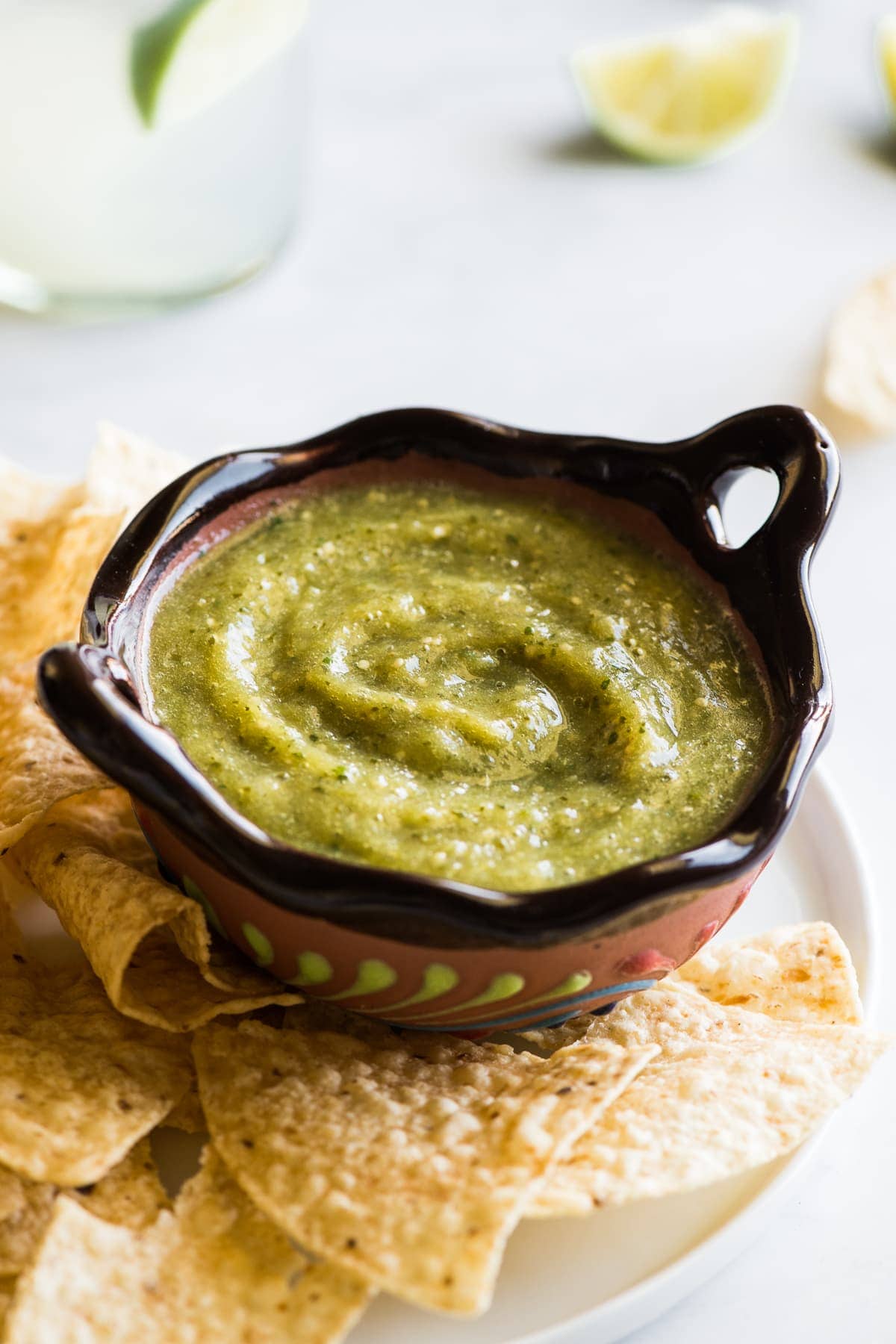
Salsa verde is one of my favorite salsas ever. I grew up eating it every Sunday for lunch (along with a big bowl of salsa Mexicana) when my mom would make a big batch to serve with tortilla chips as an appetizer to feed my big Mexican family.
It’s just so fresh, tangy, vibrant, and just plain delicious!
It can also be used in a million different ways. Eating it with chips is my personal favorite, but it’s also used in recipes like enchiladas verdes, chilaquiles verdes, and salsa verde chicken!
Making this salsa yourself rather than buying it from a store is a total game-changer.
What Is Salsa Verde?
Salsa verde is a zesty green salsa that’s a staple in Mexican cuisine. Unlike red salsas like roasted tomato salsa, this green version gets its vibrant color from tart little tomatillos – those small green tomatoes wrapped in a papery husk.
They’re blended up with green chiles like jalapeños or serranos to give it some spice, plus onions, garlic, cilantro, and a squeeze of lime juice.
The result is a bold, bright salsa that’s super fresh and herbaceous, with a nice tang and just the right amount of heat!
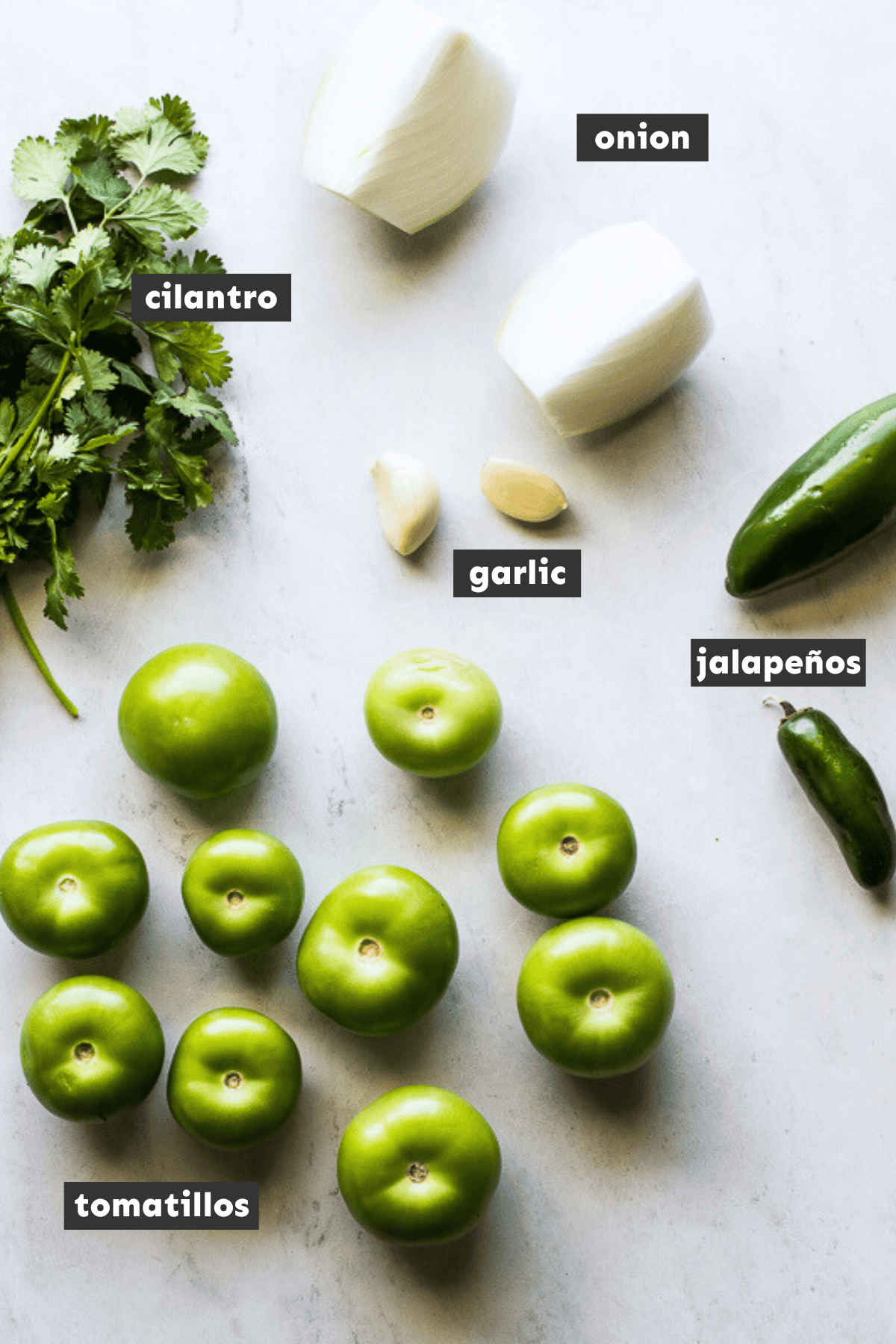
Salsa Verde Ingredients
- Tomatillos: These small and round green tomato look-a-likes are one of the main components in an authentic salsa verde recipe. Remove the papery husks before roasted or boiling them. If you’ve never cooked with them before, learn all about tomatillos.
- Chile peppers: A handful of jalapeños in this salsa gives it the perfect amount of spice without it being overwhelming. I removed the seeds so it wouldn’t be too spicy, but you can leave them in if you prefer. If you like it extra spicy, use serrano peppers instead.
- White onion and garlic: Because it isn’t a real salsa without these two.
- Cilantro: Fresh cilantro incorporates very bright and fresh flavors into the salsa. Plus, it helps with that pop of green!
- Lime juice: This adds just a hint of tang and citrus to the salsa.
- Salt: To round out the flavors.
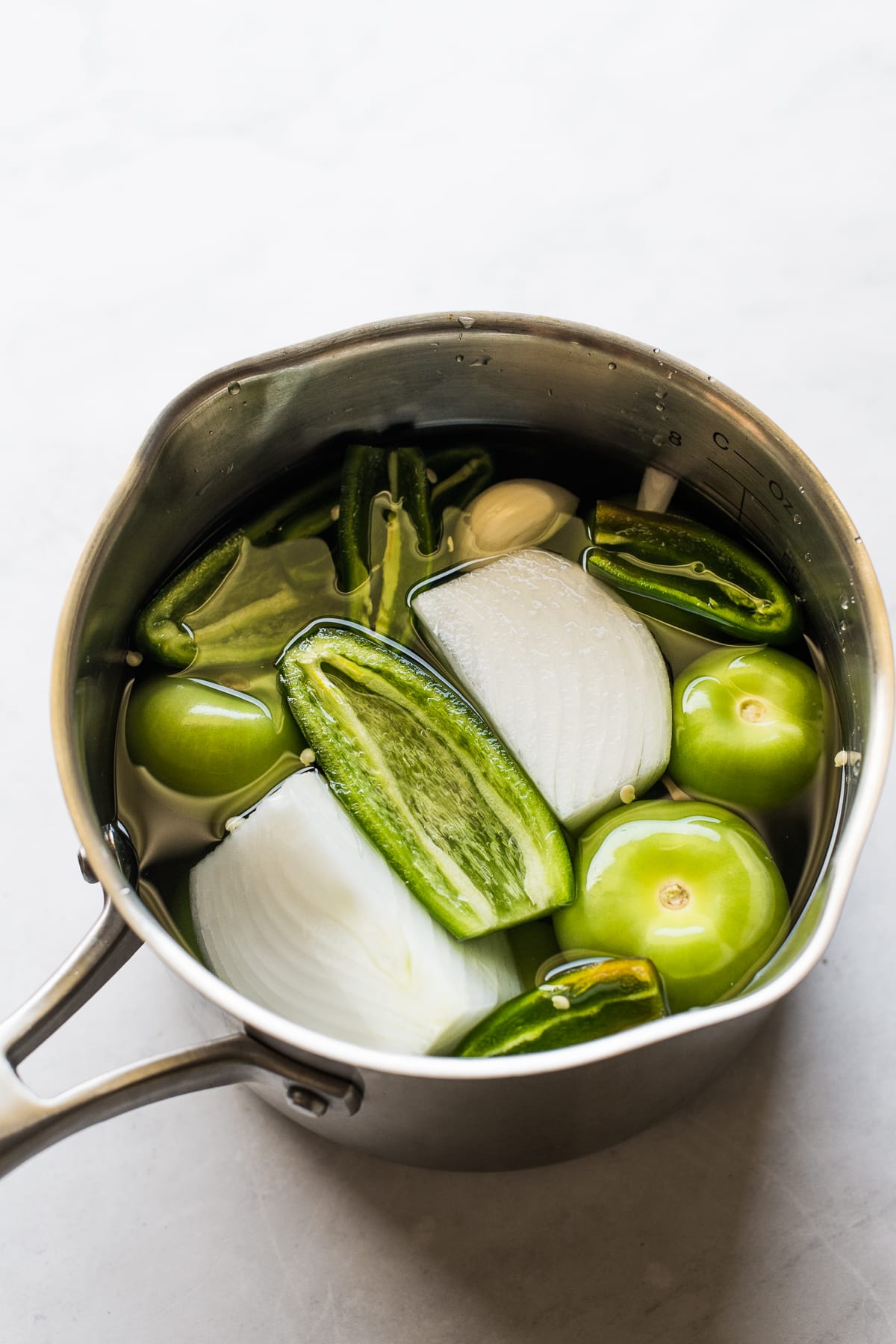
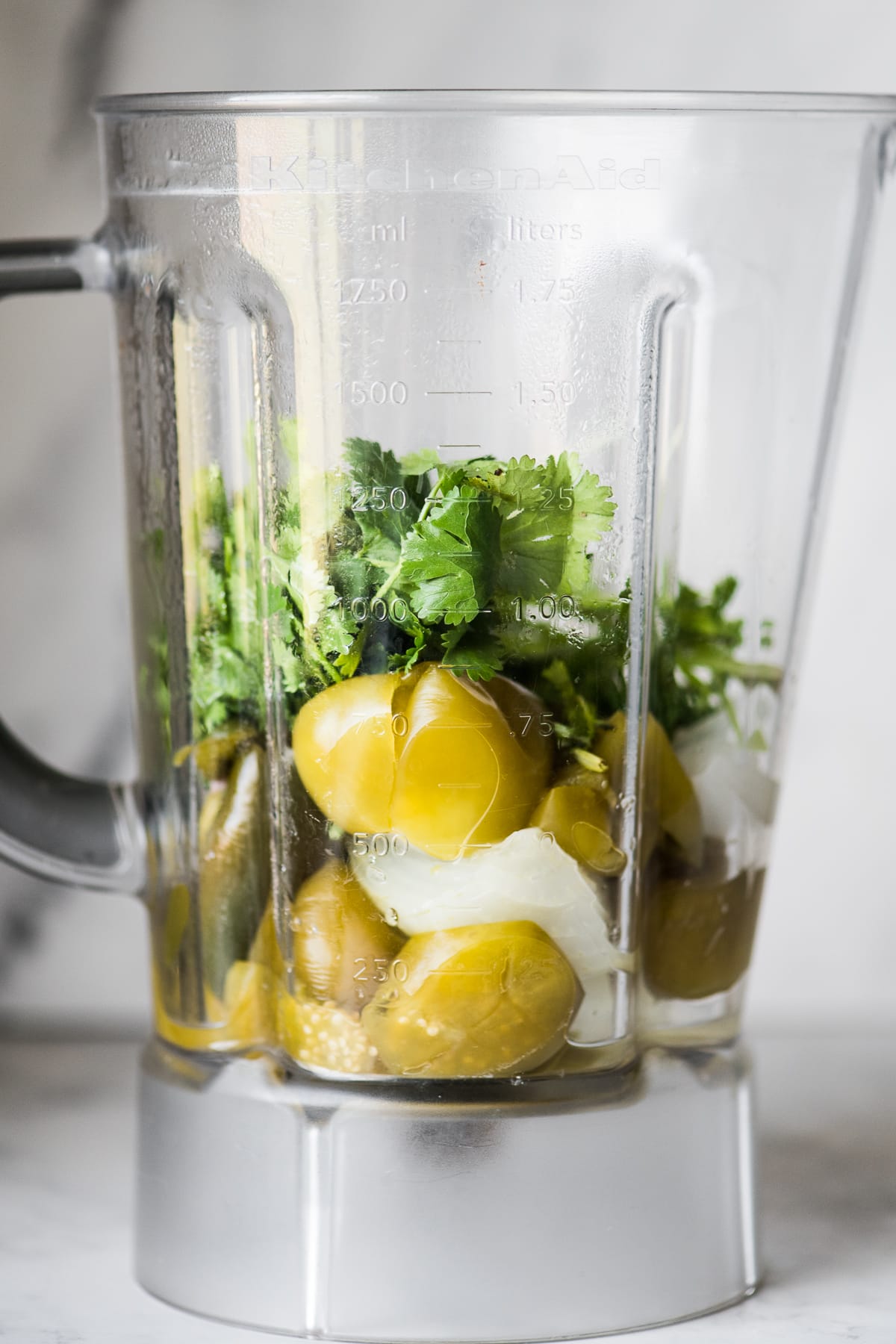
How to Make Salsa Verde
- Roast or boil: If roasting, place the tomatillos, jalapeños, and garlic on a baking sheet and roast directly under the broiler for 10 minutes, flipping halfway through until charred. If boiling, add the tomatillos, jalapeños, onion, and garlic to a medium pot filled with water. Bring it to a boil over high heat, then reduce the heat to low. Cover the pot and let everything simmer for 10 minutes.
- Blend: Add the tomatillos, jalapeños, onion, garlic, cilantro, lime juice, and salt to a large blender and blend until smooth. Taste and adjust the salt as needed.
- Serve or store: Serve the salsa immediately or store it in the refrigerator for up to a week.
Roasting vs Boiling Salsa Verde
Salsa verde can be made in a few different ways. Some recipes call for the tomatillos and jalapeños to be roasted, and some ask for them to be boiled instead.
I grew up eating salsa verde that was boiled, blended, and then lightly fried in a little oil, so that’s what I prefer, but the roasted version is also delicious and is typically what is most popular and found in many Mexican restaurants!
Boiling the tomatillos creates a more bright and tangy salsa, whereas roasting them adds a smoky, charred element and makes the salsa a little sweeter.
Both versions are delicious, and which way you make your salsa verde is personal preference!
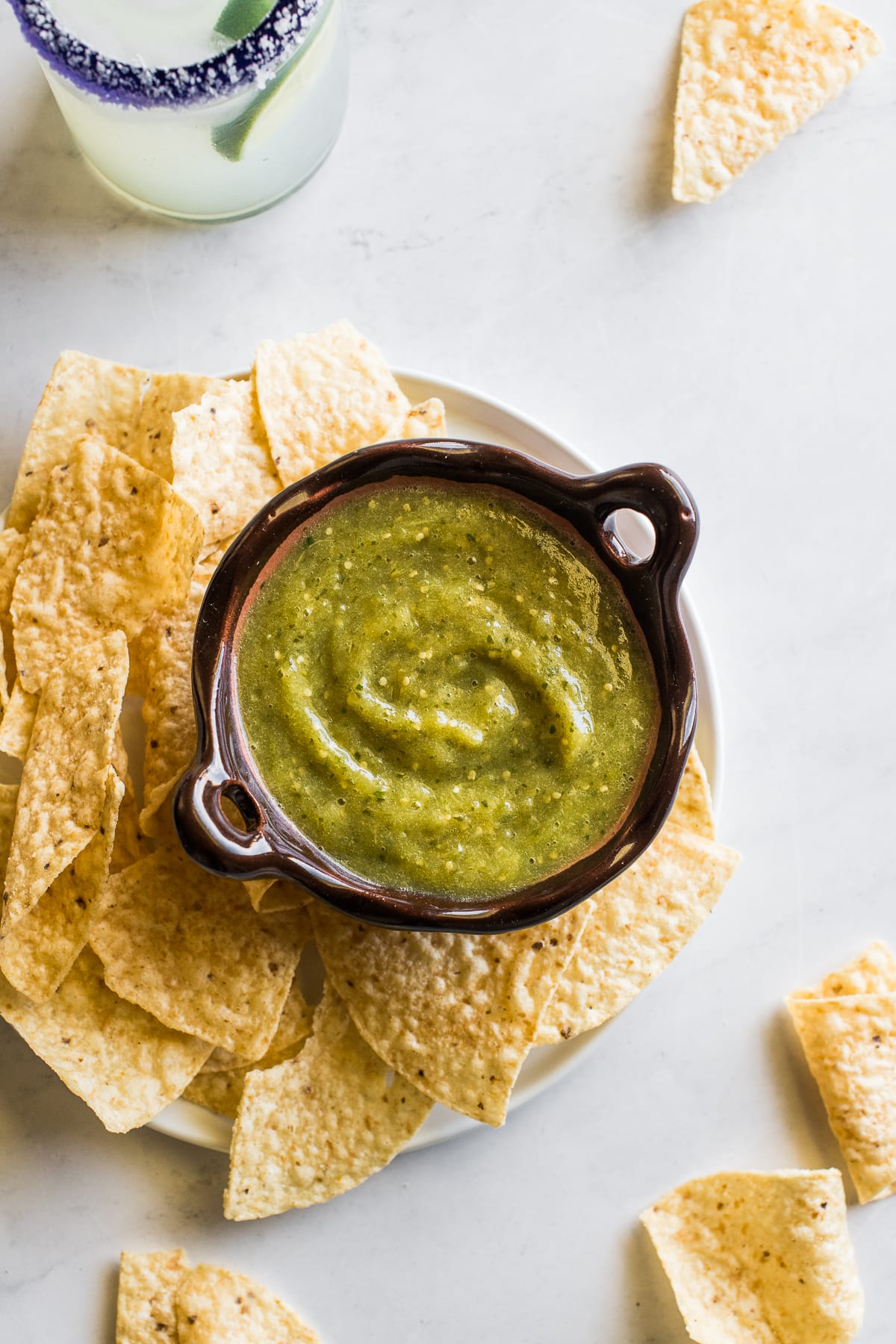
Recipe Tips
- Adjust the spice level. To make it mild, remove the seeds from all of the jalapeños. To make it medium-hot, remove the seeds from only some of the jalapeños. To make it extra spicy, use serrano peppers instead of jalapeños. Blend just 1 pepper at a time until you reach the desired level of spice.
- To add even more depth of flavor, try lightly frying the blended salsa in 1 tablespoon of olive oil! I grew up eating it this way, and it’s so good!
- Adjust the consistency. If your salsa too thick, add 1 tablespoon of water at a time to the blender until it’s your desired consistency.
- Salt to taste. Add in more salt one pinch at a time until it’s just right.
Ways to Use Salsa Verde
Salsa verde can be used in so many different ways! Here are few of them:
- As an appetizer served with tortilla chips, baked tortilla chips, or air fryer tortilla chips.
- As a condiment for tacos. Try it with carnitas, barbacoa, tacos al pastor, and carne asada tacos.
- As a cooking sauce like in my salsa verde chicken, enchiladas suizas, and salsa verde breakfast frittata.
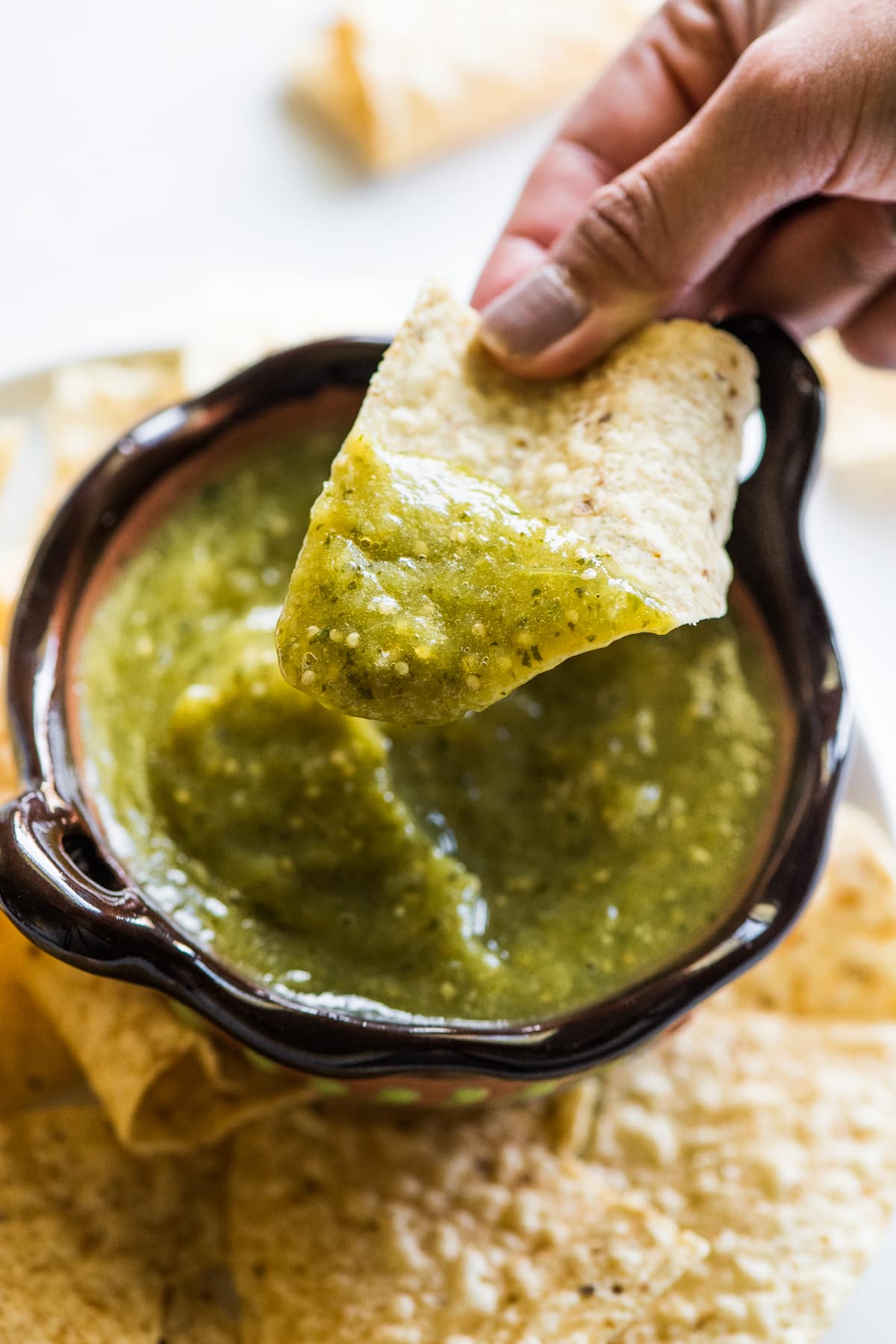
Storing and Freezing
To store, place in an airtight container and refrigerate for up to 1 week.
To freeze, place in a freezer-safe container or bag and freeze for up to 3 months. Thaw in the fridge or at room temperature when ready to use.
More Mexican Salsas
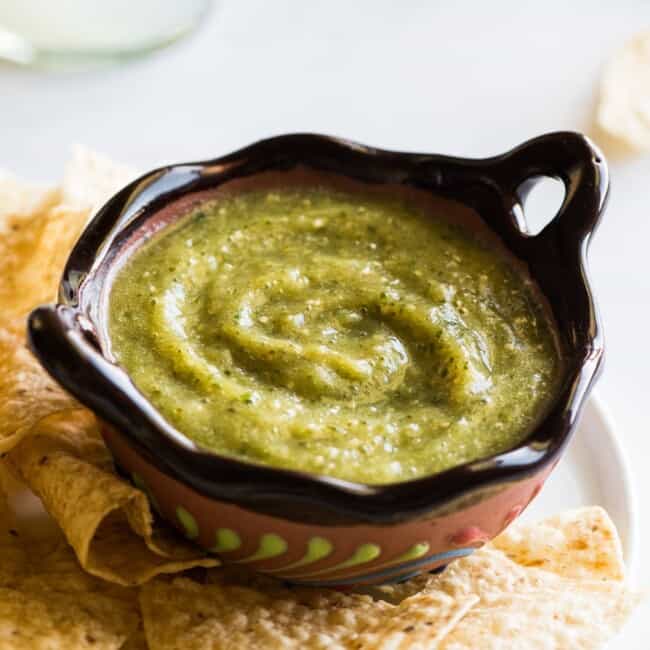
Salsa Verde Recipe
Ingredients
- 1 pound tomatillos, husked and rinsed (about 10 med-large tomatillos)
- 3 jalapeño peppers, stemmed (and seeded if desired)
- ½ medium white onion
- 2 cloves garlic
- ½ cup cilantro (stems and leaves)
- 1 tablespoon lime juice (about ½ lime)
- 1 teaspoon kosher salt, plus more as needed
Instructions
- To roast the salsa: Add the tomatillos, jalapeños, and garlic to a large baking sheet. Roast directly under the broiler for 10 minutes, flipping halfway through, until the tomatillos and peppers are charred.
- To boil the salsa: Add the tomatillos, jalapeños, onion, garlic, and enough water to completely cover them to a medium pot. Bring to a boil, reduce the heat to low, cover, and simmer for 6-8 minutes until the tomatillos and peppers turn from a bright green to a dull and dark yellow-ish camouflage green.
- Add the tomatillos, jalapeños, onion, garlic, cilantro, lime juice, and salt to a large blender and blend until smooth.
- Serve immediately or store in the refrigerator for up to 1 week.
Notes
- Makes 2 cups total.
- Adjust the spice level. To make it mild, remove the seeds from all of the jalapeños. To make it medium-hot, remove the seeds from only some of the jalapeños. To make it extra spicy, use serrano peppers instead of jalapeños. Blend just 1 pepper at a time until you reach the desired level of spice.
- To add even more depth of flavor, try lightly frying the blended salsa in 1 tablespoon of olive oil! I grew up eating it this way, and it’s so good! Adjust the consistency.
- If your salsa is too thick, add 1 tablespoon of water at a time to the blender until it’s your desired consistency.
- Salt to taste. Add in more salt one pinch at a time until it’s just right.
Nutrition
Nutrition information is automatically calculated, so should only be used as an approximation.
This recipe was originally published in June 2016 and has been updated with more helpful tips, better photos, and a better overall recipe.

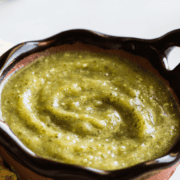

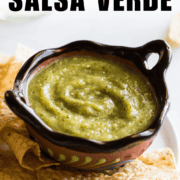
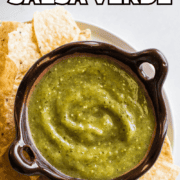

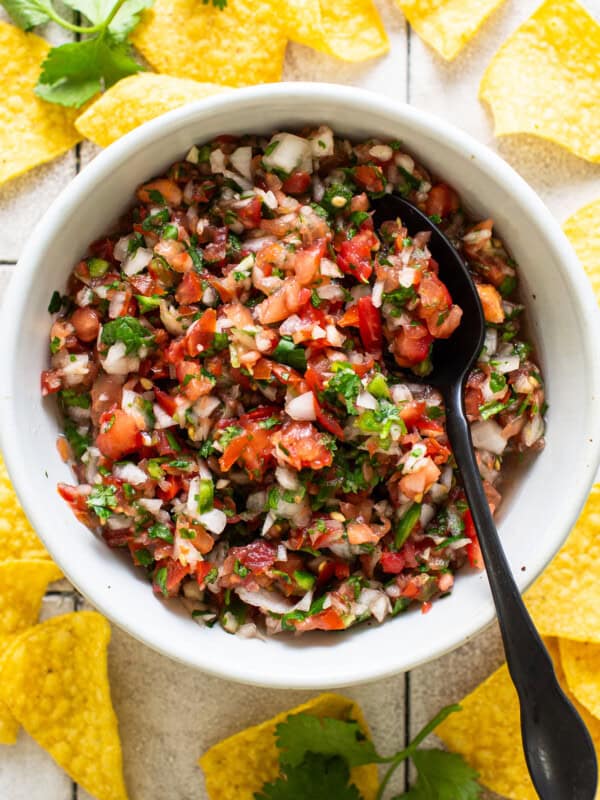
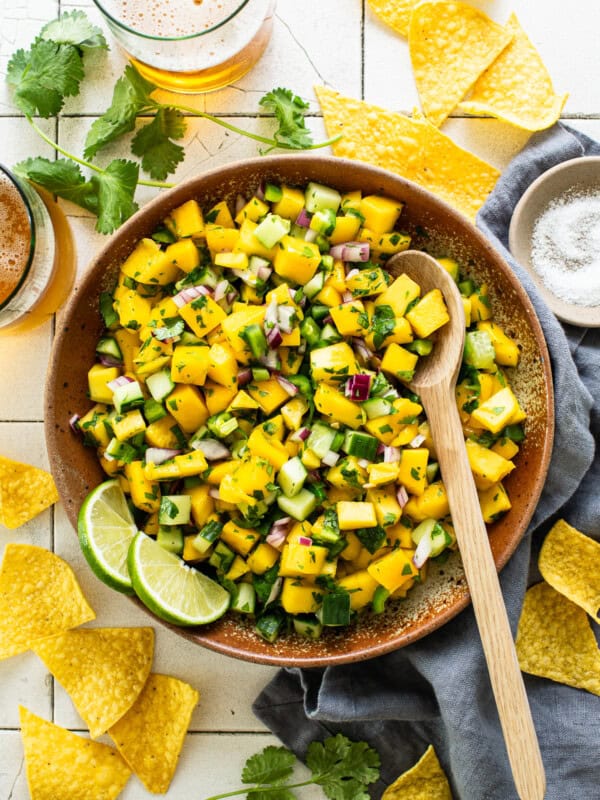
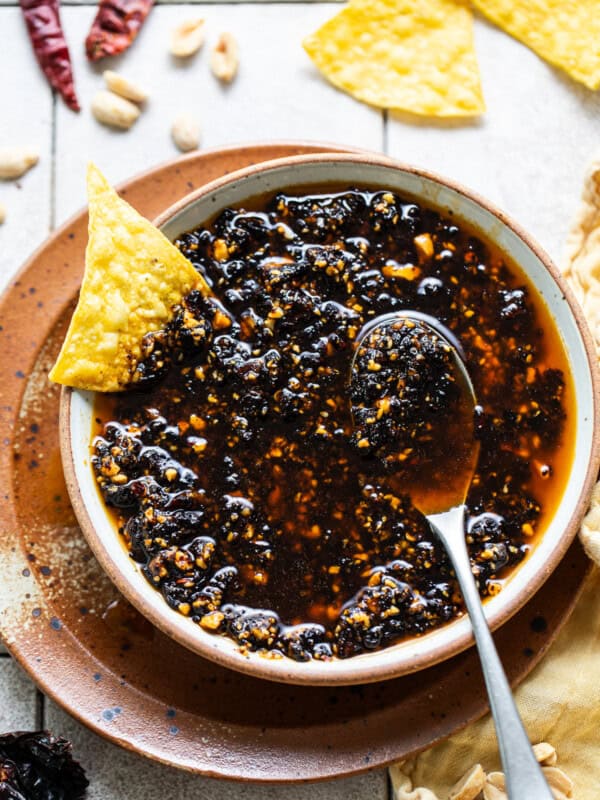
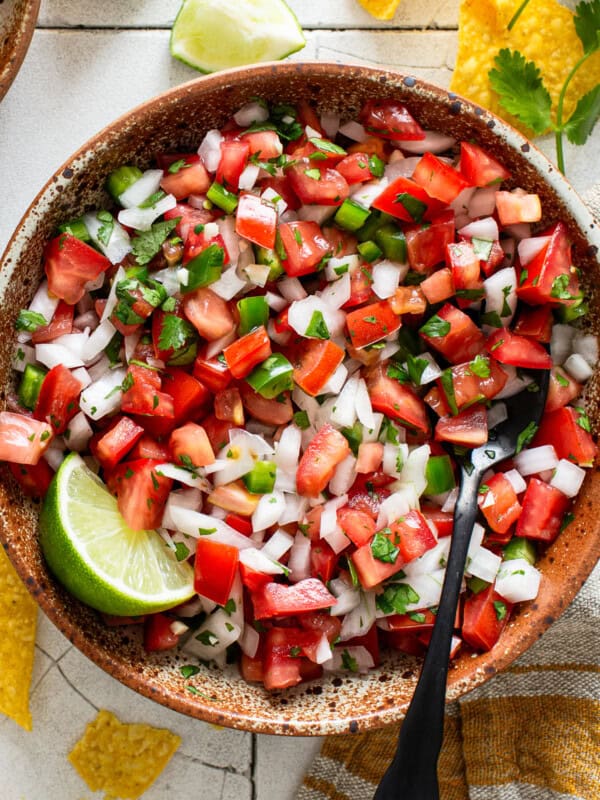









Your recipes remind me of my mom’s cooking. The smell of toasting chiles is HOME.
Thank you for all these great delicious memories. 😋❤
Just made this with 1/2 a lime, 2 roasted garlic cloves, 1/4 more teaspoon of salt and it was AMAZING. Paired it with Isabel’s Guac & some fried shrimp tacos. LOVE!!!! 🙂
I LOVE this recipe. I’ve made it a few times now and it is ridiculously easy and tastes more authentic than any salsa I’ve attempted. The only adjustment I made was in measuring – I used a whole bundle of green onions (ends cut off), 5-6 garlic cloves instead of 1, and just a touch of lime juice. Quick and delicious.
This is so amazing! I’ll never buy canned enchilada sauce again!
Yay!! I’m so happy you liked it!
Can you process this to have a longer shelf life?
Hi Bonnie! Unfortunately, none that I have tried. You could freeze it for up to 3 months, but the flavors will dull quite a bit. It should also keep in the fridge for 2 weeks, but the flavors are best within the first week. I’ve heard of lacto-fermenting salsa before but have never tried it. You may want to Google lacto-fermenting.
Isabel– Can you freze this salsa?–Amos
Yes! Just put it in a freezer-safe container or bag and try to remove any air pockets.
Can i use tomatos i cant find tomatillios here in germany?
Sooooo good and so easy!!! Thank you!
Thank you, Angie! 🙂 So glad you liked it.
We cannot get tomatillos in our grocery stores for Salsa Verde. Is there anything that can be substituted? The enchiladas look wonderful.
Hi, Dianne. That’s so unfortunate that they don’t have tomatillos! I haven’t ever substituted anything for tomatillos so I don’t have any suggestions from personal experience. But if you can find green tomatoes or even just underripe regular tomatoes, that could work. Add a splash of lime juice to give it some of the tartness that tomatillos have.
Let me know how that works!
Maybe add other green vegetables like cilantro avocado bell pepper. My mom and cousin do that for the green pozole.
I would use canned tomatillos if you can’t find fresh. I’ve used them in a pinch and my Hispanic friends were amazed I used canned and it turned out so well.
That’s so great to hear, Jennifer. Thanks for letting me know!
What can I substitute for the jalapenos? I can’t tolerate spicy foods. Thank you
Hi, Diana. You could use 1 or 2 poblano peppers instead. Those are pretty mild. Or if you can’t even do slightly mild, you could go ahead and just do 1 or 2 sweet bell peppers.
Very good!